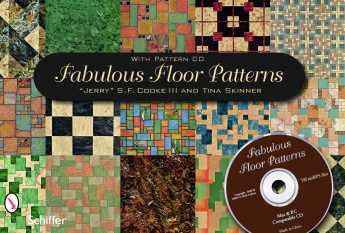White Paper
Making Sense of Wear Resistance & AC Ratings for Laminate Flooring

The North American Laminate Flooring Association (NALFA) clarifies the properties that come into play when describing the durability of a laminate flooring product.
Photo: Mohawk.
Some technical and marketing terms used in the flooring industry can be confusing or misleading for the consumer. The term “Abrasion Class, or AC rating (AC1-AC6),” is a classification from the European standard EN 13329 to describe “wear resistance” of laminate flooring. Even though, the North American standard for laminate flooring NALFA-LF-01 does not use AC rating classification, the AC rating has become over the years widely use in the marketing of laminate flooring. Abrasion class is only one component of product durability; other properties such as impact and stain resistance also come into play when describing how durable a laminate flooring product really is.
From a warranty perspective, laminate flooring manufacturers define wear resistance as the loss of the wear layer so that the décor image has been worn through. The deterioration in the aesthetics of a laminate floor due to wear will likely become unsatisfactory to the consumer long before the pattern has worn all the way through. When considering only the AC rating to determine a floor’s suitability for a particular use, few laminate flooring products wear all the way through to the pattern. For example, a consumer that has chosen an AC5 wear rated floor with high abrasion resistance may think that they have bought a product that will last for many years, but there are other factors to consider, and the consumer may not understand the trade-offs.
The North American Laminate Flooring Association (NALFA) certifies laminate flooring in four different levels, from Residential to Heavy Commercial, seen in Figure 1. NALFA certification includes the same sort of testing that the European standard uses when determining its abrasion classification, but the NALFA levels consider more than this single test. Each level has its own criteria for wear, scratch, impact, and stain. The original document that defines these levels is found on the NALFA website and can be downloaded free of charge here: NALFA-LF-01. We recommend that the consumer identify the NALFA certification level in order to understand the floor performance and its fitness for use.

Sometimes the phrase “AC rating” is improperly defined as a measure for stain, impact, and color fade. Figure 2 shows an example of a confusing statement found online. The AC rating (wear resistance) of the flooring in this example is said to provide better performance in terms of wearing, scratching, and fading. A high AC class only refers to the wear resistance level, it does not imply better scratch and/color fading resistance.

What is The Difference Between Wear, Scratch, Impact, and Stain Resistance?
An AC rating characterizes only the wear resistance of a laminate flooring product. See below an explanation of terms representing the broader range of product durability.
Wear Resistance (Abrasion Resistance)
In the flooring industry, abrasion resistance (also called wear resistance) and scratch resistance are two very distinct properties of the flooring. NALFA defines wear resistance as “the ability of the surface of laminate flooring to resist abrasive wear through the decor layer.” This property is measured by the “Wear Resistance” test (see NALFA LF-01 3.7), which consists of abrading the surface of the laminate flooring with sandpaper several thousand times.


It is important to understand that even though the samples could be scratched after only a few cycles, the test for abrasion resistance (commonly called the Taber test) lasts until the décor is worn through in at least three locations. This test aims to simulate how long-term foot traffic affects the flooring surface. The photo to the right (Figure 4) shows a laminate flooring sample after testing as per NALFA LF-01 3.7 Wear Resistance.
Impact Resistance
NALFA defines a dent as “a depression with or without a fracture of the laminate surface.” NALFA has established two minimum performance criteria for impact resistance: large ball and small ball impact resistance (NALFA LF-01 3.5 and 3.6). The purpose of the two NALFA tests is to simulate impacts to the floor that in a real world scenario could be caused by objects falling on the floor, heavy furniture with narrow feet or high heels. Figure 5 shows impacted/dented flooring. Impact resistance is directly linked to the core layer hardness or density. Harder/denser materials tend to have better impact performance.

Stain Resistance
NALFA defines stain resistance as “the degree to which a material resists permanent discoloration or surface attack from exposure to household items and/or industrial chemicals or reagents.” The stain resistance of a flooring material is not related to its abrasion class, but to the chemical nature of its surface layer. NALFA requires all certified flooring products to test against 15 different chemicals such as ethanol, coffee, iodine, mustard, ammonia, and several other common household chemicals as described in LF-01 3.4 Cleanability/Stain Resistance test method.
Takeaway
To summarize, the durability of laminate flooring cannot be assessed by considering only the AC rating or a particular wear class. Consumers should verify other quality features such as impact and stain resistance. Products with a NALFA logo have been tested against 14 different quality criteria and classified to a NALFA certification level based on those results. The NALFA certification rating provides a much truer indication of the overall durability of the laminate flooring. Look for the NALFA certification when making your laminate flooring choices, based on your flooring needs.
Looking for a reprint of this article?
From high-res PDFs to custom plaques, order your copy today!







